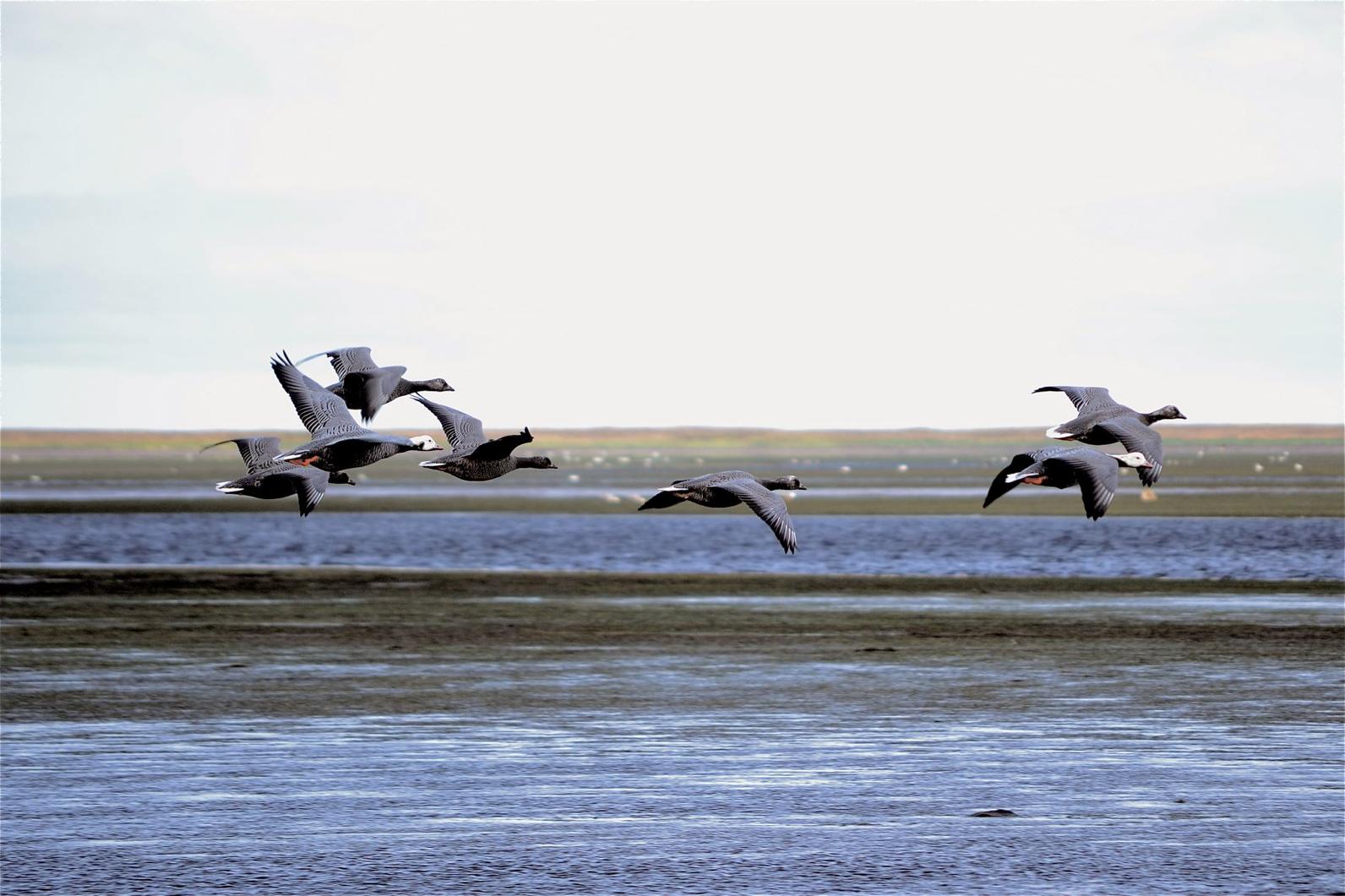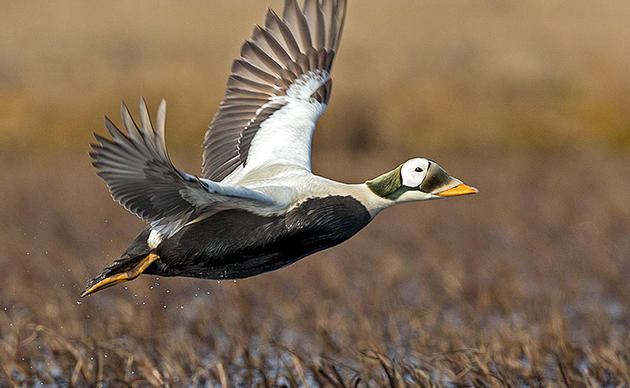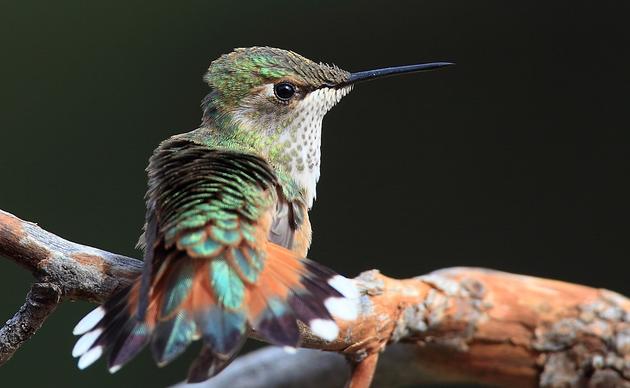
Last January, the Trump administration’s Secretary of the Interior, Ryan Zinke, signed off on a land exchange to allow a road through the Izembek National Wildlife Refuge. Environmental groups, including Audubon, challenged the action in court on several legal grounds. The case is now pending before a federal judge in Anchorage. A decision could come down in a month or two, or could take the better part of a year. While we await the court’s decision, let’s take a moment to reflect on how we got here.
What is so special about Izembek? The Izembek Refuge is a critical crossroads for Pacific Brant that fly to and from the Arctic every year. Izembek lies along Alaska’s Aleutian chain, well south of the Arctic, and the sheltered lagoons are a major draw for migrating Brant. These geese and other waterfowl rest and refuel on the plentiful eelgrass, a nutritious aquatic plant that grows in shallow marine areas. The importance of Izembek for Brant cannot be overstated. Nearly every single Pacific Brant stops over at Izembek during migration. More and more Brant are even staying at Izembek for the winter, making this globally-significant Important Bird Area even more significant and ever more important.
What is the harm of a road? A road through those sheltered lagoons would bring more disturbance, both legal and illegal, to a densely concentrated and vulnerable bird population. The Brant at Izembek already experience pressure from hunting and some marine and land traffic. These are legal activities subject to regulation. However, due to limited funding Izembek’s managers struggle to prevent poaching and illegal off-roading on this remote refuge. Poaching reduces the population above and beyond the carefully calculated hunting allowance. Off-road vehicle traffic is stressful for birds that need to concentrate on resting and foraging. Stressed and distracted Brant become “Brant on the brink,” less fit and more at risk of succumbing to the dangers of migrating thousands of miles every year. Without adequate funding for wildlife law enforcement, the single best enforcement mechanism is simply lack of access. A new road, however, would increase access and cast the specter of poaching and illegal off-roading deeper into protected areas.
What are the lawsuit claims? The lawsuit filed on behalf of Audubon and our partners challenges the land exchange on several legal grounds. Secretary Zinke did not write an environmental impact statement or hold public comment periods, as required by NEPA (National Environmental Policy Act). The Secretary did not consult with the Fish and Wildlife Service on potential harm to protected species including Steller’s Eider, as required by the ESA (Endangered Species Act). Finally, the land exchange violates ANILCA (Alaska National Interest Land Conservation Act), a federal law that protects federal conservation land in Alaska, including Denali, the Arctic Refuge, and Izembek. If the court makes a decision based on the ANILCA claim, the case could set a resounding new legal precedent for land conservation in Alaska.
What comes next in the court case? As we await the outcome of the lawsuit, the Trump administration is moving ahead with preliminary steps in the land exchange. The agency is finalizing a survey that determines the exact coordinates of the land to be exchanged. The agency will soon conduct a property appraisal. While these steps may be undone, the progress being made toward an exchange of actual property rights underscores the urgency of this court case.



